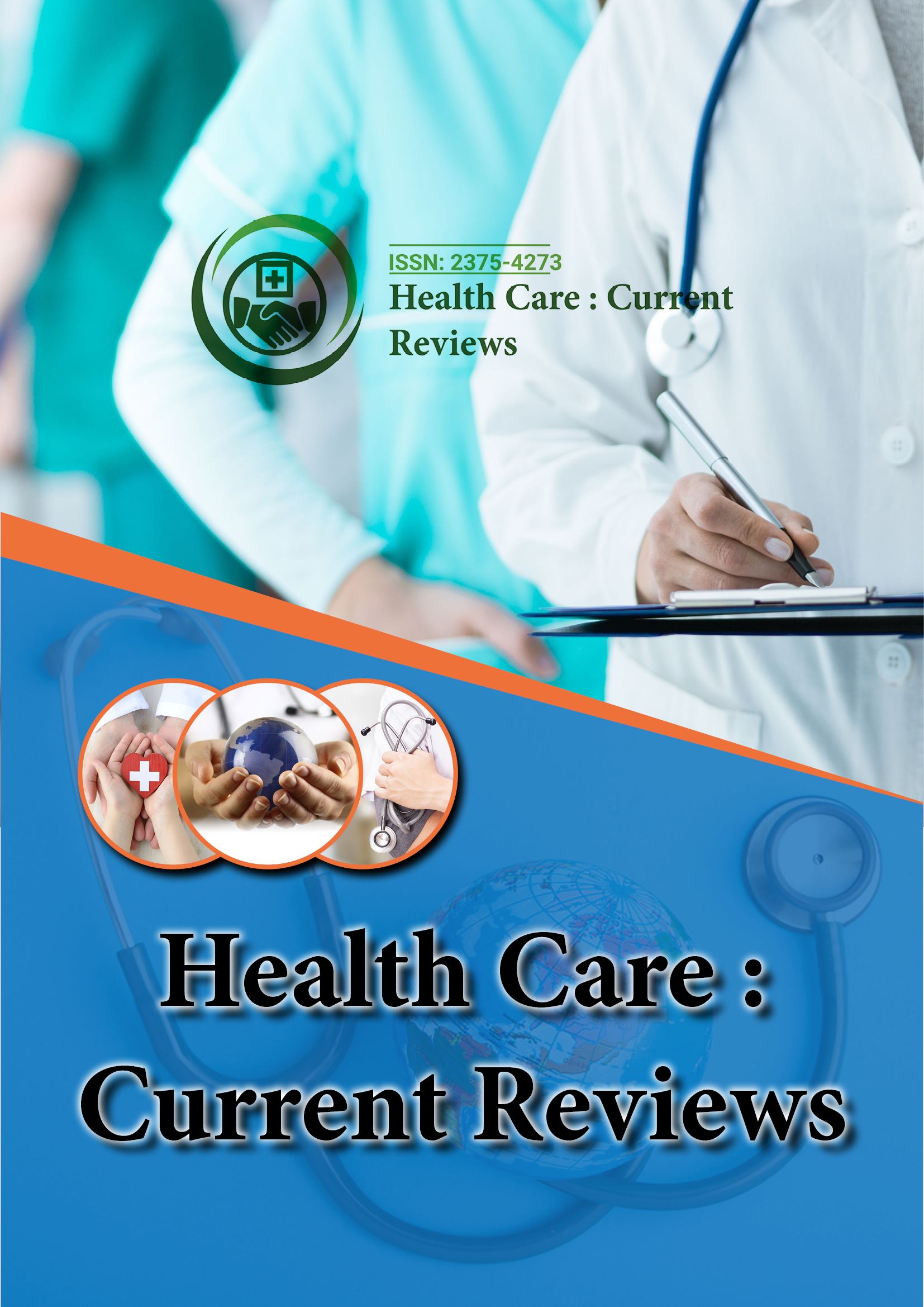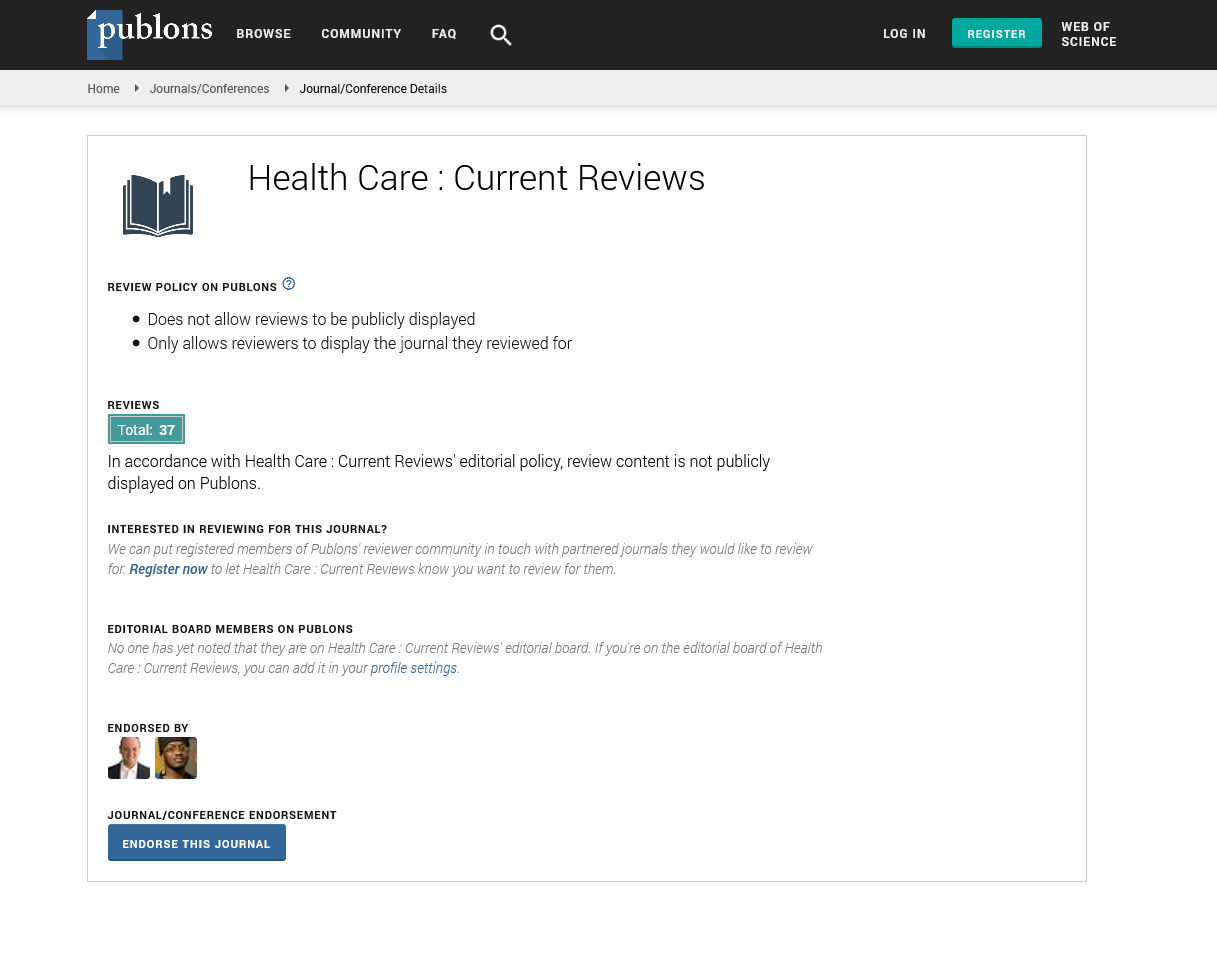Indexed In
- Open J Gate
- Academic Keys
- RefSeek
- Hamdard University
- EBSCO A-Z
- Publons
- Geneva Foundation for Medical Education and Research
- Google Scholar
Useful Links
Share This Page
Journal Flyer

Open Access Journals
- Agri and Aquaculture
- Biochemistry
- Bioinformatics & Systems Biology
- Business & Management
- Chemistry
- Clinical Sciences
- Engineering
- Food & Nutrition
- General Science
- Genetics & Molecular Biology
- Immunology & Microbiology
- Medical Sciences
- Neuroscience & Psychology
- Nursing & Health Care
- Pharmaceutical Sciences
Commentry - (2023) Volume 11, Issue 1
Smart Medical Information Technology (SMIT) and its Advantages in Healthcare
Anna Angela*Received: 02-Jan-2023, Manuscript No. HCCR-23-20738; Editor assigned: 05-Jan-2023, Pre QC No. HCCR-23-20738(PQ); Reviewed: 20-Jan-2023, QC No. HCCR-23-20738; Revised: 26-Jan-2023, Manuscript No. HCCR-23-20738(R); Published: 03-Feb-2023, DOI: 10.35248/2375-4273.23.11.336
Description
Smart Medical Information Technology (SMIT) refers to the use of digital tools to support the delivery of healthcare services. SMIT has revolutionized the healthcare industry, improving patient care and enhancing the efficiency and effectiveness of healthcare providers. It discusses the role of SMIT in healthcare and how it is being used to improve patient outcomes. SMIT has several advantages that make it an essential tool for healthcare providers. One of the primary benefits of SMIT is that it improves the quality of care provided to patients. SMIT enables healthcare providers to access patient data easily which makes it easier to provide personalized care. For example, doctors can quickly access a patient's medical history, medications and allergies which can help them make better treatment decisions. Another advantage of SMIT is that it improves patient outcomes. SMIT tools can help healthcare providers identify potential health risks early leading to early intervention and treatment.
This information can be analyzed to identify any potential health issues and addressed promptly, preventing about severe health problems. SMIT also enhances communication between healthcare providers and patients. Patients can use SMIT tools to schedule appointments request prescription refills and access their medical records. SMIT tools can also help healthcare providers communicate with patients remotely which is particularly useful in situations where patients cannot travel to the healthcare facility. For example, telemedicine allows healthcare providers to diagnose and treat patients remotely reducing the need for patients to visit a hospital or clinic physically. Finally SMIT helps healthcare providers improve their efficiency and effectiveness. SMIT tools can automate several tasks reducing the workload of healthcare providers and allowing them to focus on providing quality care. SMIT tools can also help healthcare providers streamline administrative processes such as billing and documentation improving efficiency and reducing costs. Electronic Health Records (EHRs)EHRs are digital records of a patient's medical history which can be accessed by healthcare providers from anywhere at any time. EHRs can improve patient outcomes by providing healthcare providers with access to comprehensive patient information enabling them to make more informed treatment decisions. Telemedicine is the use of SMIT tools to diagnose and treat patients remotely. Telemedicine can be used for a variety of medical specialties including primary care, cardiology and mental health.
Telemedicine can improve patient outcomes by providing patients with timely access to healthcare services reducing the need for in-person visits and enabling healthcare providers to monitor patients remotely. Wearable technology such as smart watches and fitness trackers can be used to monitor a patient's vital signs such as heart rate, blood pressure and oxygen saturation. Wearable technology can improve patient outcomes by detecting potential health issues early and providing healthcare providers with data to help them make better treatment decisions. While SMIT has several advantages there are also several challenges that healthcare providers must overcome to fully potential. One of the primary challenges of SMIT is data security. Patient data is highly sensitive and healthcare providers must take steps to ensure that it is protected from unauthorized access.
Another challenge of SMIT is the need for interoperability. SMIT tools are often developed by different vendors making it challenging to integrate them into a unified system. Healthcare providers must ensure that SMIT tools can communicate with each other seamlessly enabling the exchange of patient data across different systems. Another challenge of SMIT is the need for proper training and education. SMIT tools are constantly evolving and healthcare providers must stay up-to-date with the latest technologies to use them effectively. Healthcare providers must also be trained on how to use SMIT tools properly ensuring that they are used safely and effectively. Cost is another challenge of SMIT. SMIT tools can be expensive to develop and implement, making it challenging for healthcare providers to adopt them particularly in resource-limited settings.
Citation: Angela A (2023) Smart Medical Information Technology (SMIT) and its Advantages in Healthcare. Health Care Curr Rev. 11:336.
Copyright: © 2023 Angela A. This is an open-access article distributed under the terms of the Creative Commons Attribution License, which permits unrestricted use, distribution, and reproduction in any medium, provided the original author and source are credited.

